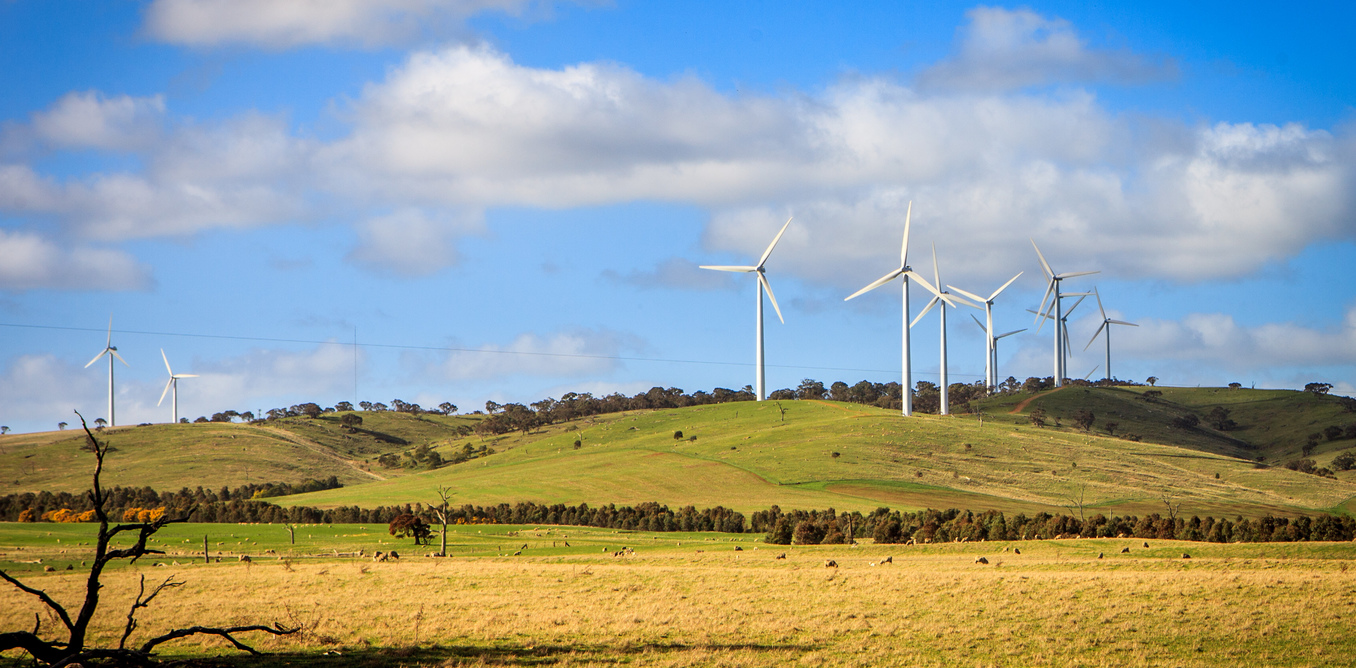The Victorian government’s intention, announced last week, to legislate its own state-based renewable energy target is the latest example of a state pursuing its own clean energy goals after expressing frustration with the pace of federal action.
The Andrews government has now confirmed its plan for 40% renewable energy by 2025, as well as an intermediate target of 25% clean energy by 2020. The policy, first flagged last year and now introduced as a bill in the state parliament, seeks to reduce greenhouse gas emissions by 16% by 2035.
At a general level, these actions are reflective of the increasing frustration states and territories have experienced at perceived inaction at the federal and even international levels. Neighbouring South Australia has also been pursuing clean energy, this month announcing plans to develop one of the world’s biggest concentrated solar plants in Port Augusta.
Victorian Premier Daniel Andrews has remarked that “it up to states like Victoria to fill that void”.
It is also, of course, a product of growing concerns regarding domestic energy security and investment confidence. Victoria’s climate and energy minister Lily D’Ambrosio said: “The renewable energy sector will now have the confidence to invest in renewable energy projects and the jobs that are crucial to Victoria’s future.”
National plans?
The Andrews government’s underlying objective is to reinforce, rather than undermine, federal initiatives such as the national Renewable Energy Target and any future implementation of the Clean Energy Target recommended by the Finkel Review.
But federal Environment and Energy Minister Josh Frydenberg has apparently rejected this view, claiming that the new Victorian proposals run counter to the development of nationally consistent energy policy. “National problems require national solutions and by going it alone with a legislated state-based renewable energy target Daniel Andrews is setting Victoria on the South Australian Labor path for higher prices and a less stable system,” Frydenberg said.
A nationally consistent plan is somewhat unrealistic in view of the current fragmented, partisan framework in which energy policy is being developed. The federal government’s apparent reluctance to accept Finkel’s recommendation for a Clean Energy Target is generating uncertainty and unrest.
In this context, actions taken by states such as Victoria and South Australia can help to encourage renewable energy investment. Given that Australia has promised to reduce greenhouse emissions by 26-28% (on 2005 levels) by 2030 under the Paris Climate Agreement, it is hard to see how boosting renewable energy production is inconsistent with broader national objectives.
The renewables target rationale
Mandating a certain amount of renewable energy, as Victoria is aiming to do, helps to push clean energy projects beyond the innovation stage and into commercial development. It also helps more established technologies such as wind and solar to move further along the cost curve and become more economically competitive.
Renewable energy targets aim to stimulate demand for clean energy, thereby ensuring that these technologies have better economy of scale. Under both the federal and Victorian frameworks, electricity utilities must source a portion of their power from renewable sources. They can comply with these requirements with the help of Renewable Energy Certificates (RECs), of which they receive one for every megawatt hour of clean energy generated.
Independent power producers can sell their RECs to utilities to earn a premium on top of their income from power sales in the wholesale electricity market. As well as buying RECs, utilities can also invest in their own renewable generation facilities, thus earning more RECs themselves.
Victoria’s situation
Victoria’s proposed new legislation will serve an important purpose following the retirement of the Hazelwood coal-fired power plant. Renewable energy currently represents about 17% of the state’s electricity generation, and the Andrews government is aiming to more than double this figure by 2025.
This year alone, Victoria has added an extra 685MW of renewable generation capacity, creating more than A$1.2 billion worth of investment in the process. If the new legislation succeeds in its aims, this level of investment will be sustained well into the next decade.
Under the bill’s proposals, D'Ambrosio will be required to determine by the end of this year the minimum renewables capacity needed to hit the 25% by 2020 target, and to make a similar decision by the end of 2019 regarding the 40% by 2025 target.
In mandating these milestones, the state is aiming to set out the exact size of the state’s transitioning energy market, in turn giving greater investment certainty to the renewable energy industry.
Victoria’s renewable energy scheme is designed to work coherently with the federal Renewable Energy Target, which given current usage projections is aiming to source 23.5% of national electricity consumption from renewables by 2020.
The federal government is yet to decide on any clean energy policy beyond the end of the decade, whether that be a Finkel-recommended Clean Energy Target or something else. In the absence of confirmed federal policy, the states have assumed the responsibility of accelerating renewable energy production through legislative initiatives designed to sustain and progress market development. This is consistent with federal commitments to global climate change imperatives.
It is hoped that these initiatives will act as a stepping stone for the eventual introduction of comprehensive state and federal clean energy regulation, and the advent of some much-needed national cohesion.
 Samantha Hepburn does not work for, consult, own shares in or receive funding from any company or organisation that would benefit from this article, and has disclosed no relevant affiliations beyond the academic appointment above.
Samantha Hepburn does not work for, consult, own shares in or receive funding from any company or organisation that would benefit from this article, and has disclosed no relevant affiliations beyond the academic appointment above.



 Silver Spikes to $62.89 on Fed Cut – But Weekly Bearish Divergence Flashes Caution: Don’t Chase, Wait for the Dip
Silver Spikes to $62.89 on Fed Cut – But Weekly Bearish Divergence Flashes Caution: Don’t Chase, Wait for the Dip  Fed Near Neutral Signals Caution Ahead, Shifting Focus to Fixed Income in 2026
Fed Near Neutral Signals Caution Ahead, Shifting Focus to Fixed Income in 2026  Morgan Stanley Downgrades Tesla as AI Growth Expectations Rise
Morgan Stanley Downgrades Tesla as AI Growth Expectations Rise  ETH Whales on Rampage: BitMine Snags 138K ETH as $3,000 Holds Firm – Bulls Gear Up for $4,000 Moonshot
ETH Whales on Rampage: BitMine Snags 138K ETH as $3,000 Holds Firm – Bulls Gear Up for $4,000 Moonshot 
































